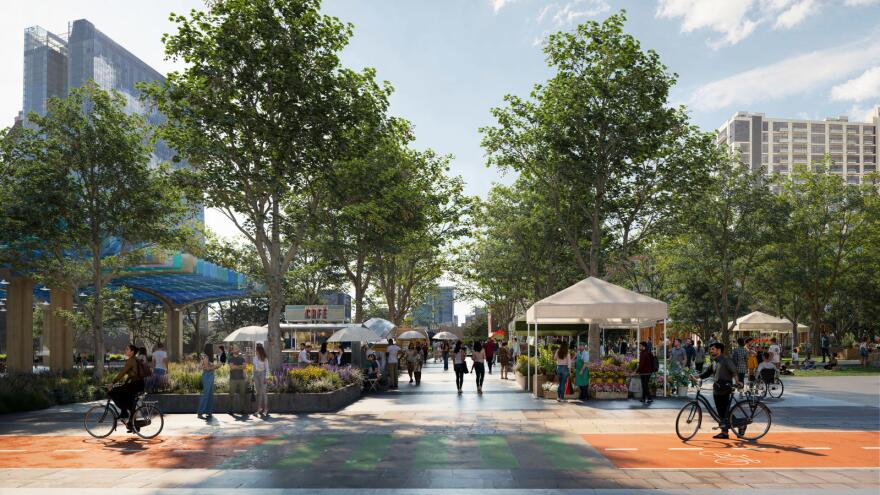Austin City Council approved a reduced plan Thursday to construct parks over I-35, a plan made possible by a state project to widen and lower the freeway.
Council members voted to pay for support columns that would allow for decks to be installed over I-35 from Cesar Chavez to Seventh streets and 11th to 12th streets. Columns would also be installed for two smaller, 300-foot-long stitches from 41st Street to the Red Line or something equivalent.
The City Council was fiercely split over the price tag for the project. Some members fretted about other priorities — everything from affordable housing to street upgrades and flood resilience.
The city is in an increasingly difficult financial position, facing a multimillion-dollar shortfall next year and a state Legislature eager to crack down on the powers of municipalities to tax and spend.
Pro-cap council members worried about the cost of closing the door on acres of new public space in the heart of the city. Doing nothing would leave an open highway canyon even wider than the existing roadway that opened in 1962.
TxDOT's timeline
The City Council was facing a deadline of May 31 to decide where to fund support columns for the decks over I-35.
TxDOT is putting the project to bid — inviting construction companies to compete for the contract — and wanted proof the city could foot the bill for the roadway infrastructure.

The city's first payment, 15% of the total, is due in 2026. The remaining balance must be paid off in annual installments based on how much work the contractor completes. The second payment would not be due till 2029, Council Member Ryan Alter said.
The state agency pushed back a separate deadline requiring proof of payment for the decks themselves. If the city can show proof of payment by November 2026, it will likely get a better deal because construction companies will compete for the contract. Waiting longer also means inflation could push up the price.
The revised timeline would allow the city to hold a bond election, asking voters how much of a property tax increase they'd be willing to accept to pay for parks over the interstate.
The city could still add decks to the project after November 2026, but they'd cost more. Instead of being competitively bid on by a number of companies, the decks would be tacked on to the existing contract as a "change order."
After 2033, TxDOT will impose a 10-year moratorium on any I-35 construction.
I-35 under construction till 2033
TxDOT is widening the highway through Travis County in three segments. South of Ben White Boulevard, columns are already being installed to add elevated lanes almost to Slaughter Lane. Two high-occupancy vehicle (HOV) lanes will run in each direction.

North of U.S. 290 East, the state began rebuilding the highway in 2023 to add one HOV lane in each direction. Several bridges are being rebuilt.
The expansion of I-35 through Central Austin, one of the largest highway projects in state history, will add two HOV lanes in each direction along an 8-mile stretch from Ben White Boulevard to U.S. 290 East. Bridges over the highway will be widened.
Construction on the project is slated to be completed by 2033.
This is a developing story and will be updated.
Copyright 2025 KUT 90.5


